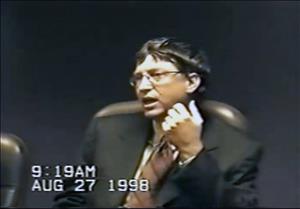On May 18, 1998, after a three-year investigation, the Department of Justice and the attorneys general of 20 states (later dropped to 19) sue the Microsoft Corporation for violating the Sherman Antitrust Act. Attorney General Janet Reno charges that the company has a "chokehold" on the market for Internet software and illegally uses its monopoly power to limit consumer choice. The suit was triggered by Microsoft's decision to "bundle" its Internet browser, called Explorer, into its Windows operating system that powers 90 percent of the world's personal computers.
The government contended that combining the browser with the operating system gave Microsoft an unfair advantage over competitors. Microsoft claimed that it created better products when it put new functions into the operating system, benefiting consumers. Legal observers said the case could have as much impact on the Information Age as the antitrust action against Standard Oil had on the Industrial Age a century ago.
On November 5, 1999, Federal District Court Judge Thomas Penfield Jackson issued a formal finding of fact that Microsoft Corporation "enjoys monopoly power" in the market for computer operating systems. He subsequently ordered that the company be broken into at least two components.
On June 28, 2001, a federal appeals court unanimously reversed the breakup of Microsoft, ruling that the software giant violated antitrust laws but that Jackson, the trial judge, had engaged in "serious judicial misconduct" by making derogatory comments about the company during and after the trial. Immediately after this appeals judgement, Microsoft stock surged $3.82 to $74.96.

